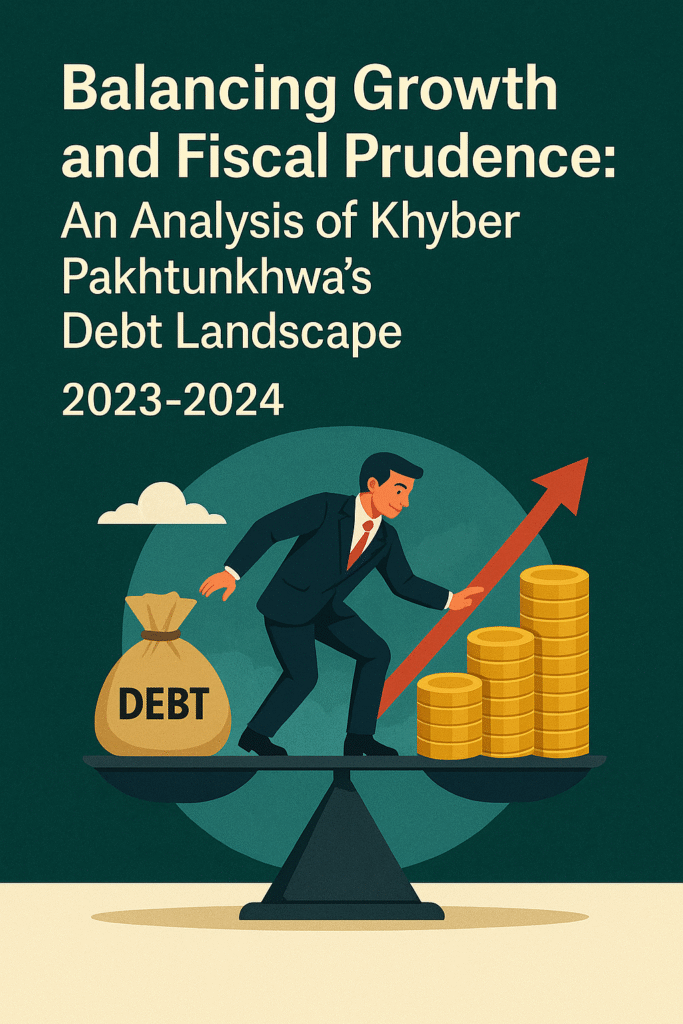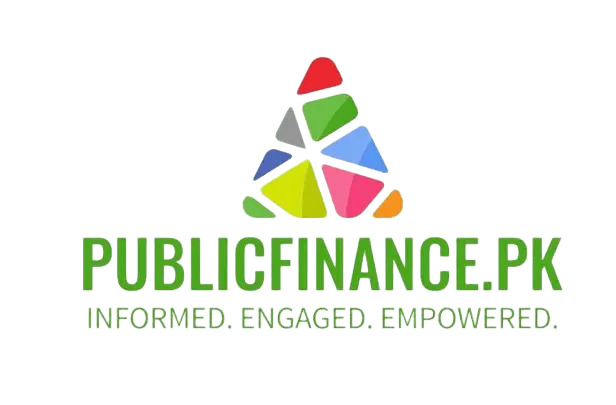
Introduction:
The Debt Statistical Bulletin (Annual) released by Khyber Pakhtunkhwa’s (KP) Finance Department for the fiscal year 2023-2024 reveals a province grappling with rising debt liabilities while striving to channel borrowed funds into growth-oriented sectors. KP’s total debt surged by 28.04% to PKR 679.5 billion, driven by currency depreciation and fresh disbursements. While the government’s commitment to transparency through the KP Fiscal Responsibility and Debt Management Act 2022 is commendable, the report underscores systemic vulnerabilities and opportunities for strategic reforms. This article dissects KP’s debt dynamics, identifies risks, and explores pathways to sustainable fiscal management.
Debt Overview: Growth and Drivers:
KP’s debt stock soared to PKR 679.5 billion in 2023-2024, up from PKR 530.7 billion the previous year. Two factors dominated this increase:
1. Currency Depreciation: The Pakistani Rupee (PKR) lost 13.73% against foreign currencies, inflating foreign debt servicing costs by PKR 72.9 billion.
2. Net Disbursements: New loan inflows (PKR 100.8 billion) outpaced principal repayments (PKR 24.8 billion), adding PKR 75.9 billion to the debt burden.
Foreign creditors dominate KP’s portfolio, with 81% of debt denominated in USD and key lenders like the Asian Development Bank (ADB) and International Development Association (IDA) accounting for 88% of liabilities. Meanwhile, debt servicing costs are set to rise sharply, with principal and interest payments budgeted at PKR 67 billion for 2024-2025—a 73% increase from 2023-2024
Key Challenges:
1. Currency and Interest Rate Risks:
– Foreign Exchange Exposure: With 99.4% of debt in foreign currencies, KP remains vulnerable to PKR volatility. A 1% depreciation could add billions to repayment obligations.
– Variable-Rate Liabilities: Floating-rate loans constitute 69% of interest payments, exposing KP to global rate hikes. For instance, ADB loans alone contributed PKR 8.2 billion in variable interest costs.
2. Refinancing and Maturity Risks:
– The average time to maturity (ATM) for debt dipped to **9.9 years**, signaling shorter repayment windows. Loans maturing within a year account for 8.94% of total debt, raising refinancing risks amid tight fiscal conditions.
3. Debt Sustainability Concerns:
– Debt servicing consumes: 4.11% of total receipts, projected to rise to 5.13% in 2024-2025. While this remains below crisis thresholds, stagnant provincial revenues (KP’s own receipts are just 7% of total income) amplify reliance on federal transfers.
4. Sectoral Imbalances:
– Transport (32%) and energy (11%) dominate borrowing, but sectors like health (3%) and education (2%) lag. Over-concentration in infrastructure risks underinvestment in human capital, critical for long-term growth.
Opportunities for Strategic Reform :
1. Optimizing Debt Structure:
– Refinancing High-Cost Loans: Replace variable-rate loans with fixed-rate instruments to hedge against interest volatility. For example, IDA loans (100% fixed-rate) incurred only PKR 3.5 billion in interest vs. ADB’s PKR 9 billion.
– Diversifying Creditors: Reduce reliance on ADB/IDA by exploring concessional financing from multilateral institutions like AIIB or climate funds.
2. Strengthening Revenue Mobilization :
– KP’s own receipts grew marginally to PKR 76.2 billion (8% of total income). Expanding provincial tax bases (e.g., property taxes, agricultural income) and improving collection efficiency could reduce dependency on volatile federal transfers.
3. Strategic Sectoral Investments :
– High-Return Sectors: Prioritize projects in renewable energy, tourism, and agriculture, which offer multiplier effects. For instance, the PKR 12.3 billion *KP Integrated Tourism Development Project* could boost local economies and generate jobs.
– Human Capital: Allocate more borrowing to education and healthcare to enhance productivity and attract private investment.
4. Leveraging the FRDMA Framework:
– The Fiscal Responsibility and Debt Management Act 2022 mandates transparency and accountability. Regular debt bulletins are a start, but stricter enforcement of debt ceilings and cost-benefit analyses for new loans could prevent fiscal overreach.
5. Mitigating Currency Risk:
– Hedging Instruments: Partner with the State Bank of Pakistan to use forward contracts or swaps for foreign currency liabilities.
– Local Currency Borrowing: Encourage lenders like ADB to issue PKR-denominated bonds, reducing forex exposure.
KP’s debt trajectory reflects both ambition and vulnerability. While borrowing has funded critical infrastructure, unchecked forex risks and rising servicing costs threaten fiscal stability. The province must strike a balance: leveraging debt for growth while insulating its economy from external shocks. By restructuring liabilities, boosting revenues, and aligning investments with sustainable development goals, KP can transform its debt portfolio from a liability into a catalyst for equitable progress. The FRDMA 2022 provides a legislative backbone—now, execution and innovation will determine success.
